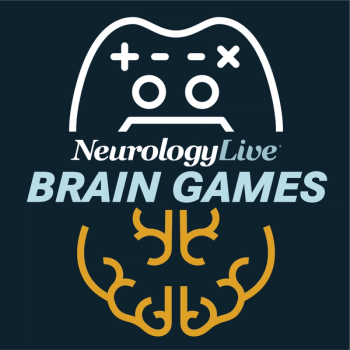
Mendelian Randomization Analysis Identifies Neuroprotective and At-Risk Proteins for NMOSD
Key Takeaways
- Increased plasma CLEC11A and SERPINA1 levels correlate with higher NMOSD risk, while elevated PF4V1 and FAM3B levels are linked to reduced risk.
- The study utilized 132 NMOSD patients and 1244 controls, applying the 2006 Wingerchuk diagnostic criteria for analysis.
Recent MR analysis uncovers protein associations with neuromyelitis optica spectrum disorder, suggesting new treatment pathways and drug targets for improved management.
A recently published Mendelian randomization (MR) analysis using data from a genome-wide association study (GWAS) revealed that increased levels of plasma CLEC11A and SERPINA1 were correlated with an elevated risk of neuromyelitis optica spectrum disorder (NMOSD), whereas elevated levels of plasma PF4V1 and cerebrospinal fluid (CSF) FAM3B were associated with a decreased risk. Overall, the identified proteins could potentially need to new treatment pathways or synergistic strategies with current immunosuppressive regimens.1
Overall, the data sample included 132 patients diagnosed with aquaporin-4-IgG-positive NMOSD and 1244 controls. The authors, which included lead investigator Hongqi Meng, department of emergency medicine, Huazhong University of Science and Technology, used 2006 Wingerchuk diagnostic criteria, which required optic neuritis, transverse myelitis, and at least 2 supportive features of either longitudinally extensive lesions, non-multiple sclerosis brain MRI, or AQP4-IgG seropositivity. The MR analysis, performed using the TwoSampleMR tool, was regulated via false discovery rate (FDR) correction, using a crucial P-value of 0.05 to prioritize results for further investigation.
Using proteome screening, the MR analysis discovered 4 protein-NMOSD associations based on FDR significance level (P <.05). These included Serine Peptidase Inhibitor, Clase Member 1 (SERPINA1), Platelet Factor 4 Variant 1 (PF4V1), and C-type lectin domain family 11 member A (CLEC11A) in plasma, as well as Family with Sequence Similarity 3 Member B (FAM3B) in CSF.
A closer look at these proteins showed that increased PF4V1 levels (OR, 0.47; 95% CI, 0.29-0.78; P = 3.39 x 10-3) and FAM3B levels (OR, 0.12; 95% CI, 0.03-0.45; P = 1.65 x 10-3) were associated with a decreased risk of NMOSD. PF4V1, also known as CXCL4L1, may exert its therapeutic effects by modulating the intercellular signaling between neurons and glial cells that play a critical role in NMOSD development. FAM3B, a cytokine-like protein associated with several disorders like diabetes, Alzheimer disease, and cancer, is also expressed in central neurons, where it can inhibit tumor necrosis factor alfa (TNF-a), a key inflammatory factor involved in the progression of NMOSD.
In contrast, findings from the study showed that elevated SERPINA1 levels (OR, 2.28; 95% CI, 1.29-4.04; P = 4.71 x 10-3) and CLEC11A levels (OR, 1.345; 95% CI, 1.29-4.04; P = 4.71 x 10-3) were related to an increased risk of NMOSD. SERPINA1, primarily implicated in immune response regulation, may play a crucial role in various physiological and pathological processes, authors noted, offering new insights into its role in NMOSD. CLEC11A, a glycoprotein essential for osteoblast maturation and hematopoiesis, may be increased in CSF in patients with trigeminal neuralgia, further proving it may promote nerve inflammation, demyelination, and neurodegeneration.
In the study, sensitivity analyses included Bayesian co-localization, reverse causality testing, phenotype scanning, and protein-protein interaction analysis to identify potential causal proteins. All told, follow-up MR analyses combined with Steiger filtering found no signs of reverse causation for the proteins in the initial MR analysis. In addition, the co-localization study indicated that PF4V1 (PPH4 = 0.934), FAM3B (PPH4 = 0.916), SERPINA1 (PPH4 = 0.978), and CLEC11A (PPH4 = 0.895) shared variants with NMOSD.
Using the STRING database with high-confidence thresholds (interaction score >0.7, experimental evidence only), a functionally enriched protein network was identified involving SERPINA1, CP, CTSC, and TF (FDR-corrected p < 0.05), with text mining also supporting co-regulation between SERPINA1 and PF4V1. Based on these findings, these proteins were selected for drug target screening. Druggability analysis via DrugBank (v5.1.9) highlighted SERPINA1, CP, and TF as direct targets of three FDA-approved or investigational drugs: alpha-1 antitrypsin replacement therapy (DB00058), ferrous gluconate (DB14488), and deferasirox (DB14489). No approved or experimental drugs were identified for CTSC or PF4V1.
The study had several limitations, including the use of only cis-pQTLs as instrumental variables, with most proteins having fewer than three SNPs, restricting the use of some Mendelian randomization methods. Additionally, the analysis was limited to individuals of European ancestry, which may affect the generalizability of the findings to other populations, highlighting the need for future studies across diverse cohorts.
REFERENCE
1. Meng H, Wang S, Gu L, et al. Potential drug targets for Neuromyelitis optica spectrum disorders (NMOSD): A Mendelian randomization analysis. PLos One. Published online April 28, 2025. doi:10.1371/journal.pone.0322098
Newsletter
Keep your finger on the pulse of neurology—subscribe to NeurologyLive for expert interviews, new data, and breakthrough treatment updates.



































